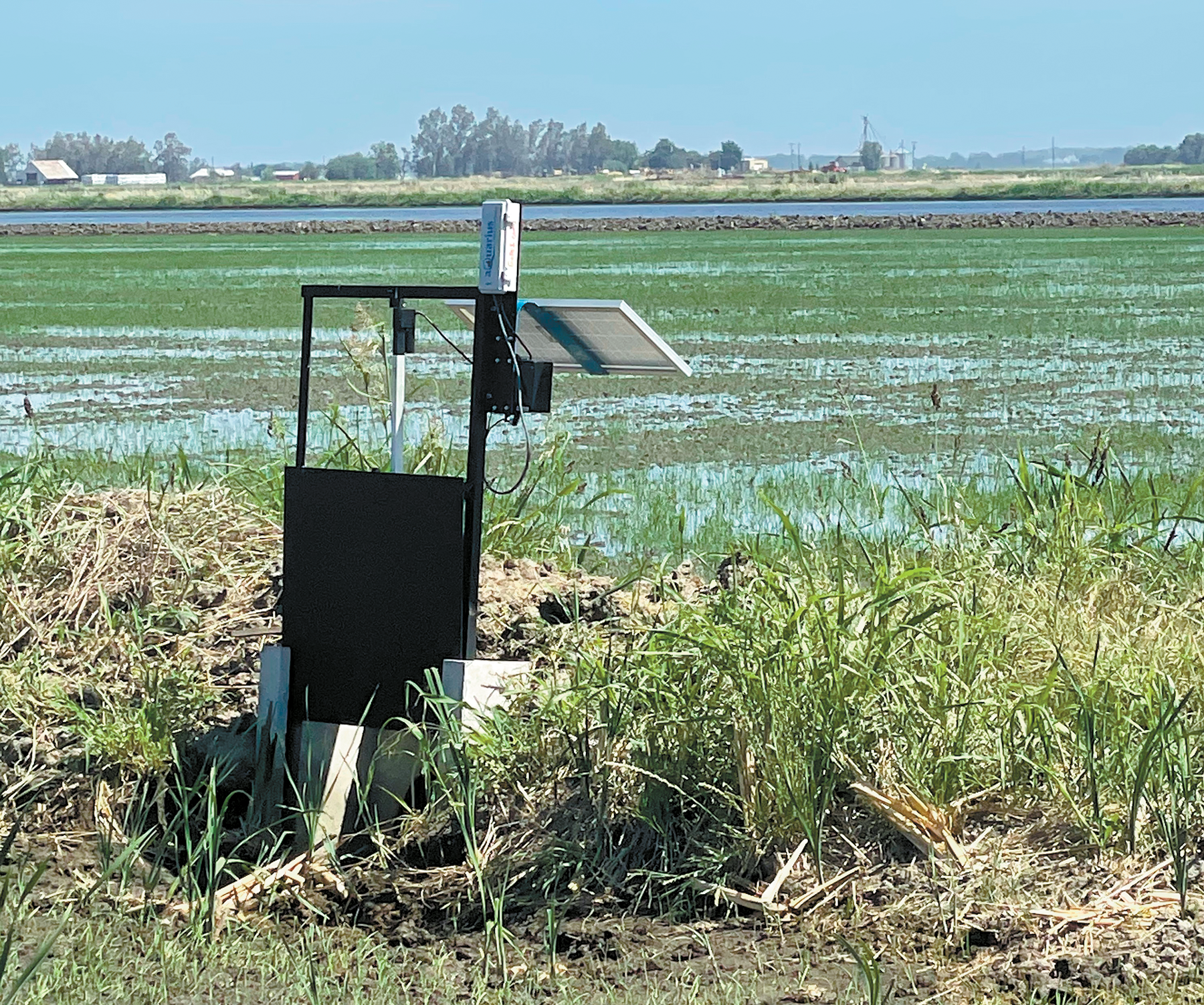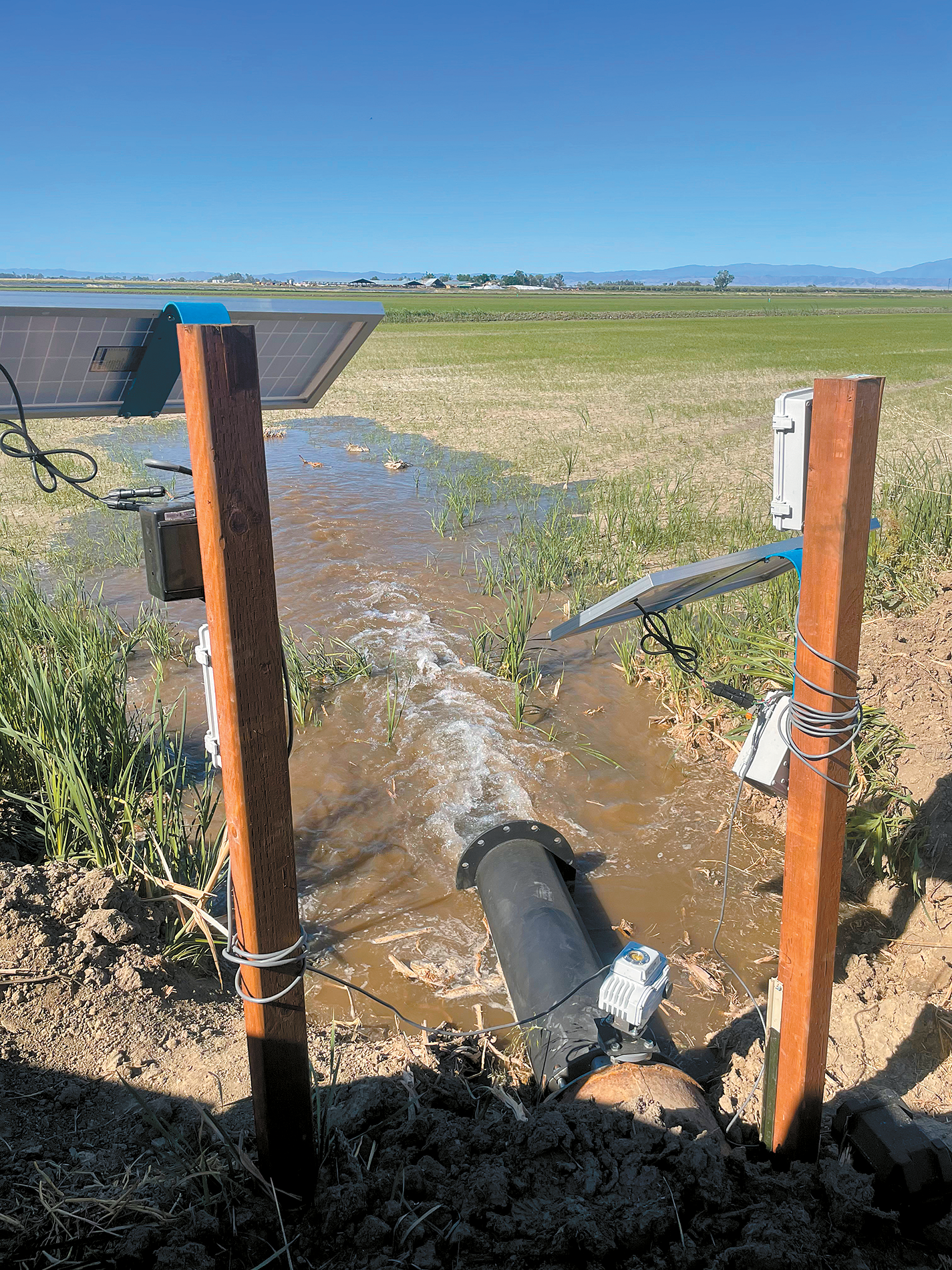Farmers turn to smartphones to monitor irrigation

Photo/Seth Fiack

Photo/Seth Fiack
By Vicky Boyd
Thanks to smartphone and computer technology, homeowners can monitor home security, adjust the thermostat and turn electrical appliances off and on while they’re away. Now a small but increasing number of farmers are turning to similar technology to automatically monitor water levels and start or stop irrigation systems.
At the same time, growers can use smartphones or computers to remotely check irrigation systems and manually make adjustments if needed.
Seth ilack, who farms rice and walnuts in Glenn County, became one of the first producers in the state to install an intelligent irrigation management system in a rice field three years ago.
“I was looking at the fact that I was spending four hours a day checking water, and I didn’t have anybody to replace me,” he said. “I can quantify the labor savings, which in my opinion is significant. I can look on my phone and see the (water) depth, so that releases that time in my day, and I can just stay working.”
Although Fiack believed the technology would also save water, he said he hasn’t yet been able to validate it. He said he hopes to expand the system’s use from the original 30 acres to 80 acres of rice in 2024.
Fiack said he was so impressed with the system’s labor savings that he plans to install a similar one in walnut orchards next year as part of a project funded by grant money from the State Water Efficiency and Enhancement Program.
Charles Burt, chairman of the Irrigation Training and Research Center and professor emeritus in agricultural engineering at California Polytechnic State University, San Luis Obispo, has researched hundreds of irrigation systems during his career. While he hasn’t worked with an automated irrigation management system in rice, he said the concept was intriguing.
In orchard and field crops, Burt said he was a firm believer in using soil moisture sensors as a tool to guide irrigations. But he doesn’t recommend automated management systems in those settings because wide variability in soil types complicates sensor placement and getting representative readings.
How close or far a sensor is from an emitter can also affect results. Burt said the automated systems won’t replace boots on the ground checking irrigation systems and plant health.
Rice fields are different, he said. The fields are typically laser leveled, so water depth is uniform and sensor placement isn’t critical. Plus, the sensor measures only one variable—water depth.
“Water level control is easy,” Burt said. “It’s entirely different than automating drip systems based on tree response.”
Fiack said he bought an Aquarius irrigation management system after learning about it from Arkansas rice producer Jim Whitaker, with whom he shares a Rice Leadership Program connection. Whitaker, who farms with his brother Sam near McGehee, Ark., has used a Precision King system for five to seven years and an Aquarius system for four years.
Based on input from their agricultural consultant, Robb Dedman, Whitaker said they began using the systems to save water. Between summer rainstorms and switching to alternate wetting and drying, which promotes a mid-season dry down before reflooding rice fields, the brothers use about one-fifth the irrigation water they used to.
They’ve also compared the automated systems to their best irrigator and saw a 20% water savings alone.
“(The system) senses and only turns the well on when you need it and turns it off the second it hits the high-level mark,” Whitaker said. “You may think you’ll get to a field at 7 a.m., but you don’t actually get to it until 9, and that pump is running for two to three hours extra.”
Despite the automation, he said the systems haven’t eliminated workers but have allowed them to make more efficient use of their time.
“You still have to check things, but you don’t have to spend all day in water-discovery mode trying to find out how much water is on every field and what well is running,” Whitaker said.
Rice fields typically are sectioned into paddies, with a levee dividing each one. A gate on the well outlet, canal or ditch regulates water flow into the top paddy. Additional gates installed in each levee allow the water to flow via gravity from the top through to the lower ones.
The irrigation management system consists of a sensor in each paddy that measures water levels every 15 minutes. It sends information wirelessly to a computerized controller on the irrigation gates. Based on parameters set by the user, the controller may open a gate to allow more water into the field or paddy or shut a gate to prevent additional water. A small solar panel powers the unit.
Users can also log into the system using a smartphone or computer to monitor irrigation levels or to manually open or shut gates.
Rice can be finicky and grows best with uniform water depth, Fiack said. Large changes in water levels can stress the plants, potentially increasing disease and reducing yield.
“If you farm rice perfectly, one of the things that gives you a yield bump of 2% to 3% is water control,” he said. “If you can keep it consistent and not have wild swings, you get better yields.”
Fiack acknowledged that investing in an automated irrigation management system carried a large up-front cost, but he said he found it more reasonable when he amortized it over five years.
The return on investment also became more attractive when he factored in what he’d pay an irrigator to drive around checking fields daily.
“The other thing is this is an always-on system,” Fiack said. “This system is checking every 15 minutes 24 hours a day. It catches those problems in the middle of the night.”
(Vicky Boyd is a reporter in Modesto. She may be contacted at vlboyd@att.net.)




